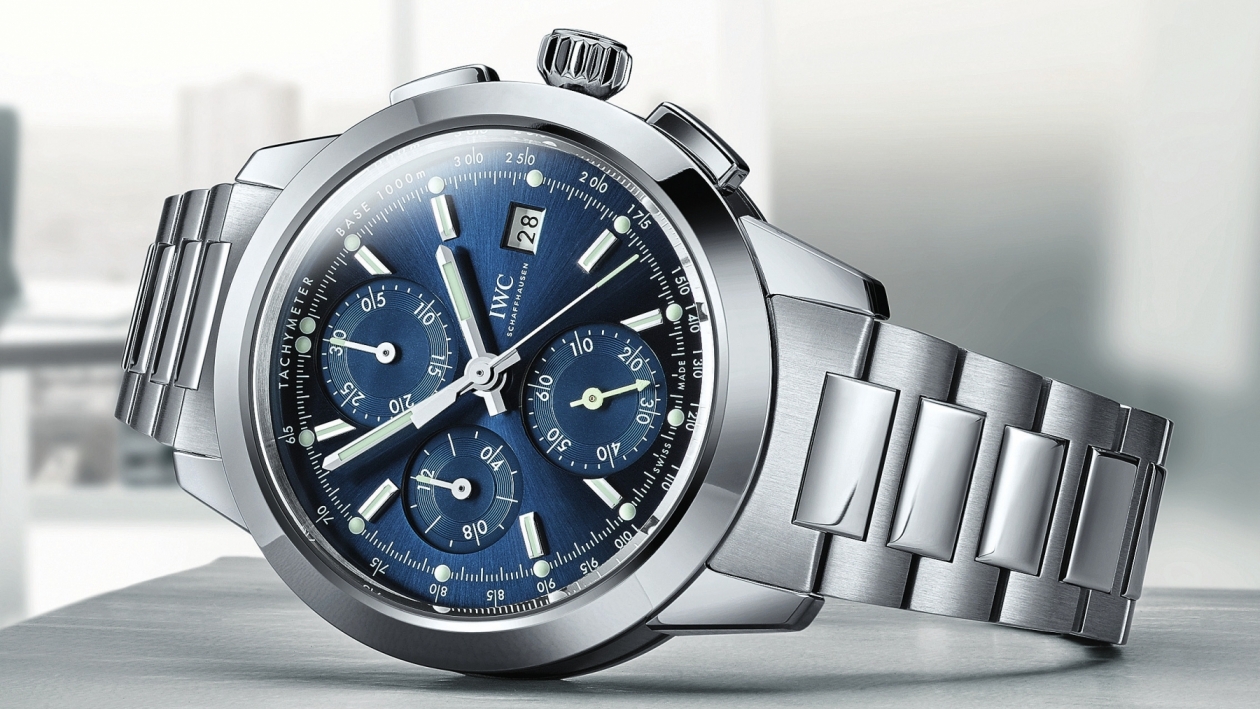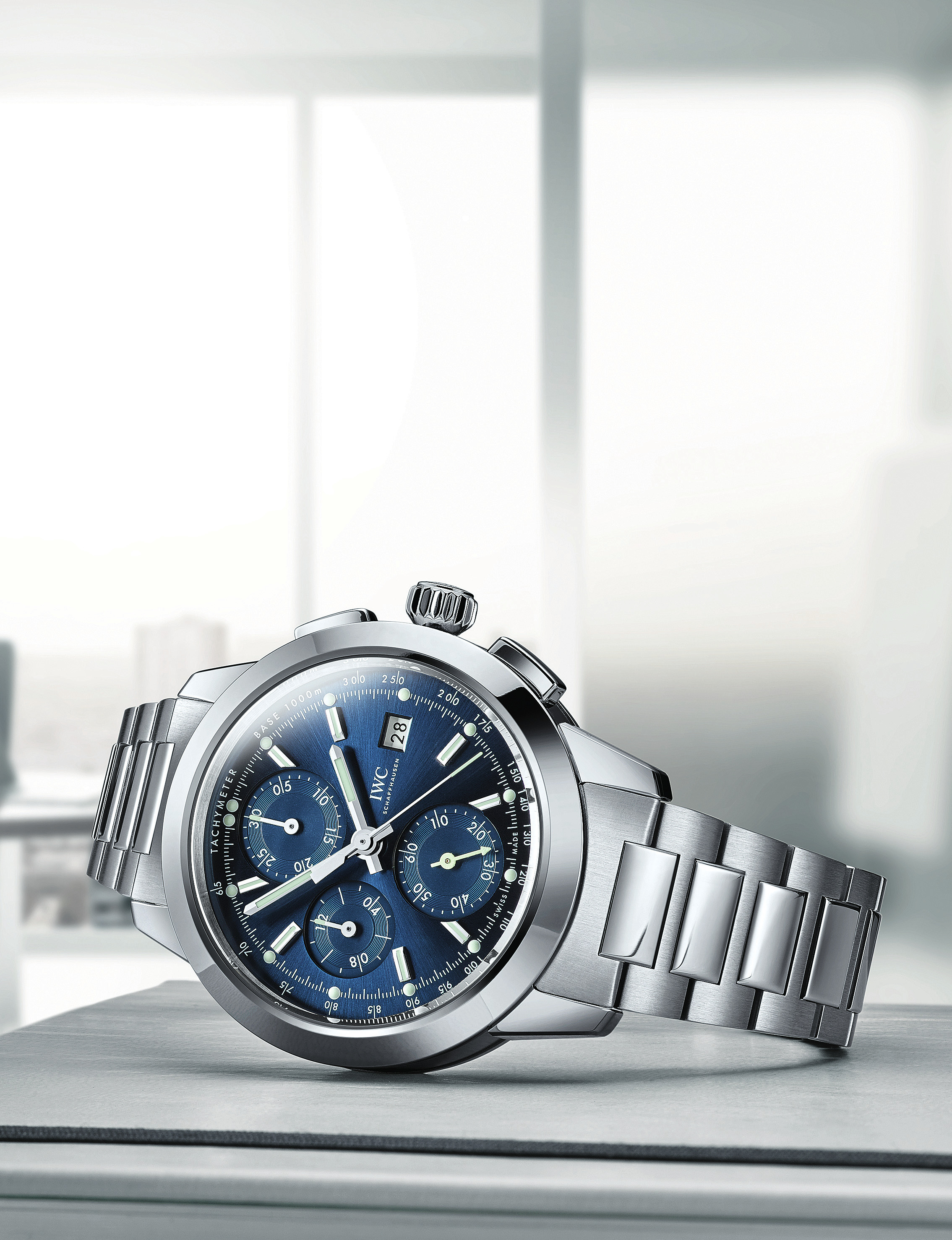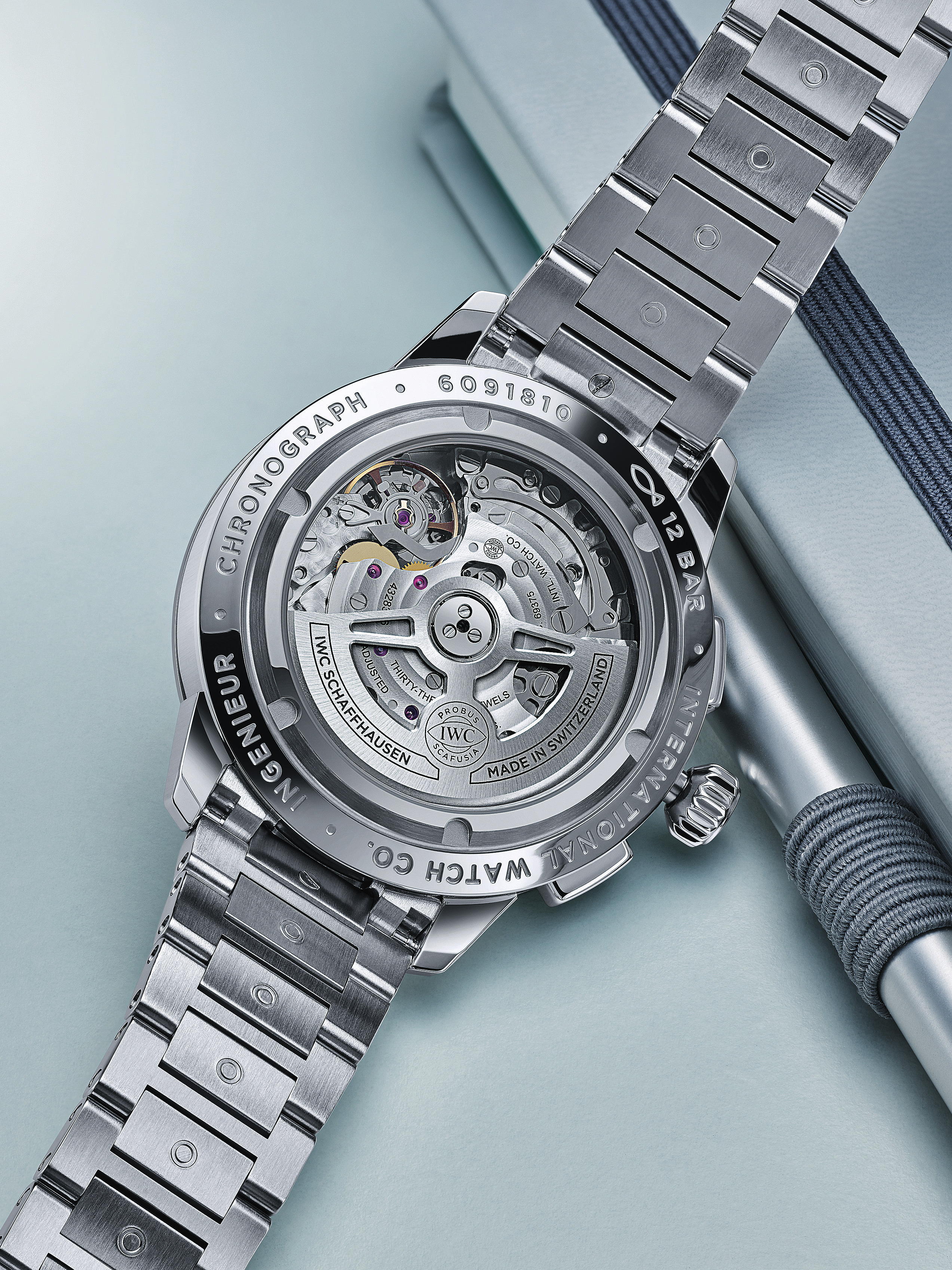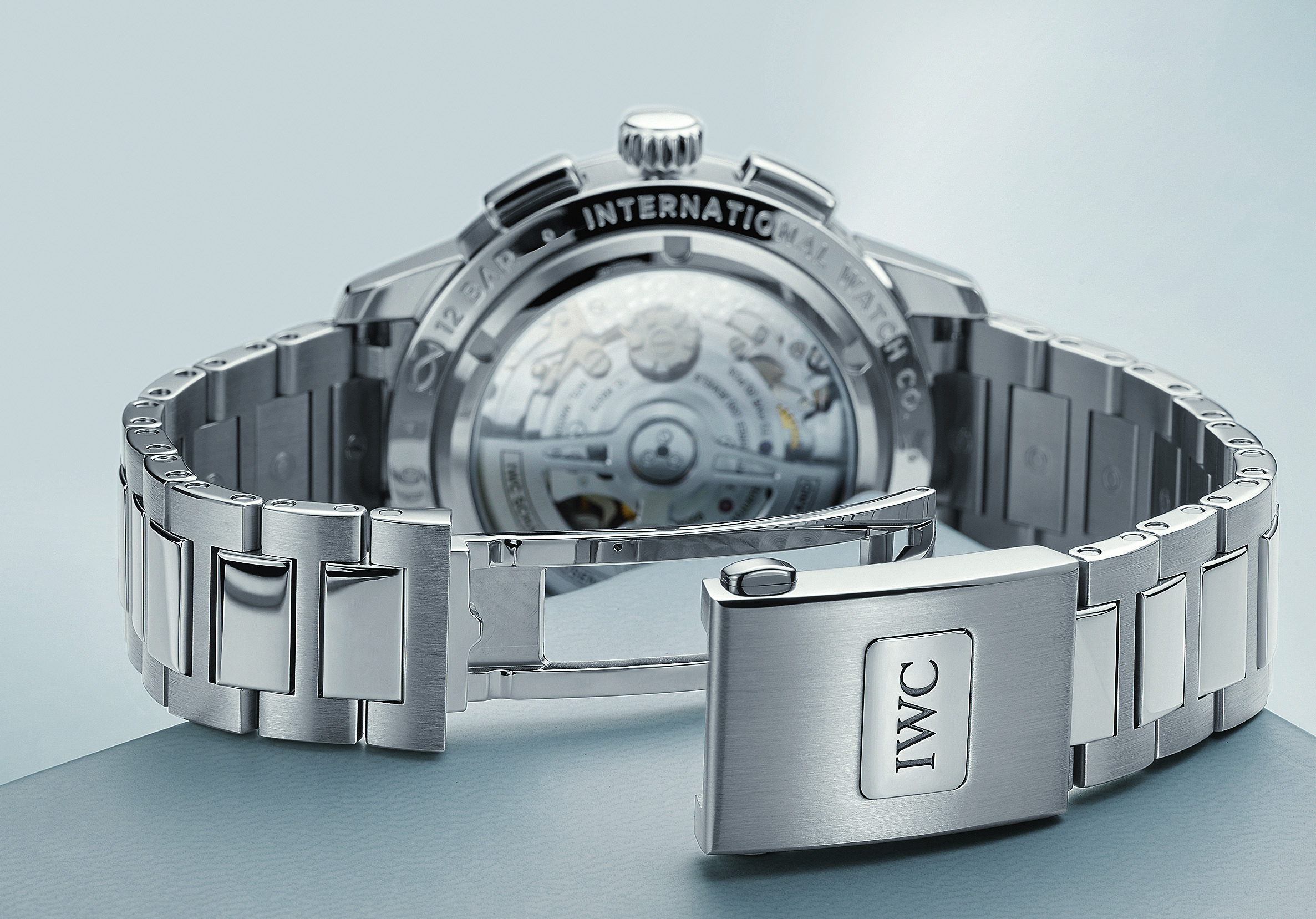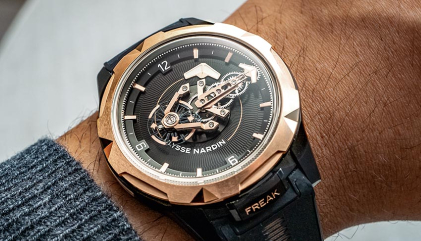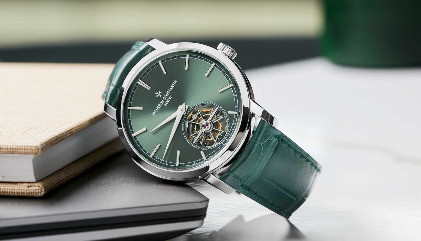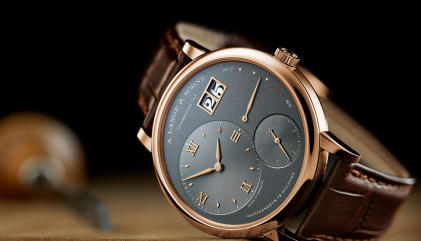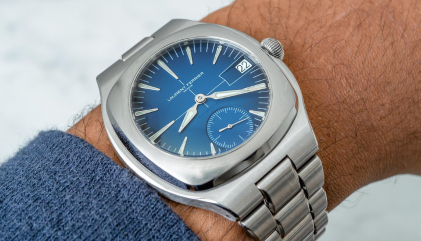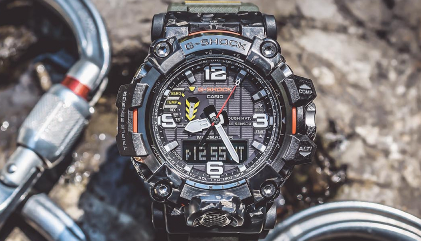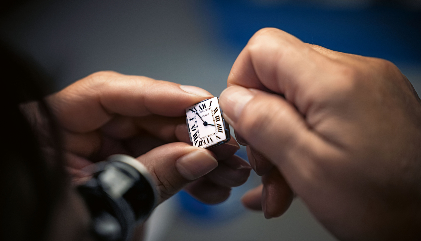No other watch brand is as deeply connected to engineering as IWC. The company employs the spirit of ingenious invention in its Ingenieur watch collection and celebrates it in its impressive timepieces. The first Ingenieur (Reference 666), introduced in 1955, was a simple, round watch that boasted an astonishing degree of precision, shock resistance, water resistance and anti-magnetic protection. It also had an advanced (for its time) pawl winding system that was named for its inventor, Albert Pellaton, the then technical director of IWC.
In 1976, Gérald Genta designed the Ingenieur “SL.” He gave it a streamlined look and a new bezel with five openings. But this design was seen as a bit of a stumbling block. Even though the five holes were evenly placed, depending on the position of the bezel, they were often not in alignment with the features of the case and dial, and were seen as undermining the concept of superior engineering. Nevertheless, this model is considered a design icon.
Surprisingly, the design of our test watch, the Ingenieur Chronograph Classic, is oriented toward the first generations of Ingenieur watches from the 1950s and ’60s rather than the later design. It’s one reason why the latest Ingenieur model might not be immediately associated with the traditions of the collection. Or maybe it’s because the new model doesn’t have the typical soft-iron cage that would give this model the well-known, superior anti-magnetic protection of other Ingenieurs, as well as linking the collection with an established record. The Ingenieur 500,000 A/m (Amperes per meter) from 1989 was designed to withstand magnetic fields and measured an incredible resistance to 3.7 million A/m. These results were achieved without using a soft iron cage but rather with the use of anti-magnetic materials including a niobium-zirconium alloy. Innovative materials are still a hot topic, with anti-magnetic silicon being used for various watch applications, but IWC doesn’t use it in the new Ingenieur. And since this model has no soft-iron cage, it doesn’t have the superior anti-magnetic protection of many of its predecessors.
After the reappearance of the bezel with five openings in the Ingenieur model of 2005, IWC returned to the Ingenieur’s original design last year with a
solid bezel and smooth, sloping edges. The faceted sword-shaped hands for the minutes and hours, the applied markers with luminous dots above, as well as the double luminous dot in place of the 12, can all be traced back to the first Ingenieurs. In the current model, the hands have good legibility, despite their polished edges, as they advance above the shifting blue tones of the dial. Depending on how the light hits it, the dial’s color changes from light blue to deep blue while giving the watch a subtle tone on the wrist. Even if blue is a trendy color, not every shade may be appropriate for an engineer.
The instrument-panel look of the dial on the Ingenieur Chronograph Classic underscores the character of the profession, and the extended markers on the subdials and tachymeter track are striking. They mark an exact time between the two-digit numerals – for example, the 30th second, the 10th elapsed minute or the fourth hour on the chronograph counter. These same line markings are also found on the tachymeter track around the edge of the dial. For the three-digit numerals, the line separates the last digit, and for the two-digit numerals, it is placed between the numerals, as on the subdial counters. The marker line accurately indicates a speed of 175 kilometers/hour, which would have to be estimated without the line marker. The elapsed seconds track is also perfectly executed. Three incremental line markers correspond to the frequency of 4 Hz provided by new in-house Calibre 69375. The small seconds dial occupies an unusual position at 6 o’clock, since most chronographs place it at 9. (Placement at 6 o’clock is more commonly seen on three-hand watches that have a small seconds subdial.)
The chronograph hours are tracked at 9 o’clock and the elapsed minutes at 12. Steel hands turn above the recessed subdials, and, despite what you might expect, only the tip of the small seconds is luminous. The elapsed time remains in the dark, because even the central elapsed seconds hand has no luminous coating. But this seems to make the glowing green time display all the brighter. With the newly designed Calibre 69375, IWC has replaced its chronograph movements based on the ETA Valjoux 7750 and now offers a more economical alternative to the in-house 89000 series. Even
if you pay `5.39 lakh (approx.) for our test watch model, the new Chronograph Sport with the 89361 movement in the current Ingenieur collection costs `7.53 lakh (approx.). Granted, it does have a flyback function and an extended power reserve of 68 hours.
While the 46-hour power reserve of Calibre 69375 is rather short by today’s standards, the regulation of the balance wheel is simpler than using balance wheel screws in the 89361 calibre. Otherwise, the 69375 chronograph movement has a column wheel control, an oscillating pinion and a new dual-pawl winding system (not the Pellaton version). You can see details through the transparent sapphire back that are typical for IWC designs, such as circular graining, perlage and a skeletonized rotor with the engraving “Probus Scafusia” (Latin for “Craftsmanship made in Schaffhausen”). The movement in our test watch ran well and showed balanced results in the testing lab. When fully wound it gained only 1.5 seconds per day after running for 24 hours with the chronograph engaged. On the wrist it ran somewhat faster with a gain of 5 seconds per day.
Calibre 69375 is housed in a classic case, as in the first Ingenieur, but with more contemporary dimensions of 42 mm in diameter and 15 mm in height. The fluted screw-down crown is easy to use, as are the rectangular chronograph pushers with their well-engineered pressure points for the column wheel technology inside the case.
As we’ve come to expect from the Ingenieur, a stainless-steel bracelet is attached to the case via integrated lug attachments. It was specially developed for this new Ingenieur model and consists of brushed and polished links. The transitions between them flow smoothly and finish in a folding clasp with an innovative fine adjustment system. Without opening the clasp, the length of the bracelet can be varied by up to 7 mm using a button that is cleverly hidden inside a logo-decorated piece within the clasp. In this new Ingenieur, brand authenticity, sophisticated engineering and understatement are brought together in one place.
| IWC Ingenieur Chronograph Classic | |
|---|---|
| Manufacturer | IWC Schaffhausen, Baumgartenstrasse 15, 8200 Schaffhausen, Switzerland |
| Reference Number | IW380802 |
| Functions | Hours, minutes, small seconds, date, chronograph (central elapsed seconds, 30-minute and 12-hour counters, tachymeter track) |
| Movement | IWC 69375, automatic, 28,800 vph, 33 jewels, Incabloc shock absorption, Glucydur balance, Nivarox hairspring, two part (Etachron) fine regulation, 46-hour power reserve, diameter = 30.0mm, height = 7.90mm |
| Case | Stainless steel, curved sapphire crystal with anti-reflective coating on both sides (top), sapphire caseback, water resistant to 120m |
| Bracelet and Clasp | Stainless steel with single-sided stainless steel folding clasp with integrated fine adjustment |
| Rate results | Deviation in seconds per 24 hours (Fully wound / after 24 hours) |
| Dial up | -1.9 / +2.8 |
| Dial down | +2.9 / +2.1 |
| Crown up | -1.5 / -3.2 |
| Crown down | +5.2 / +4.4 |
| Crown left | +2.8 / +0.6 |
| Greatest deviation | 7.1 / 7.6 |
| Average deviation | +1.5 / +1.3 |
| Average amplitude | |
| Flat positions | 285 degree / 257 degree |
| Hanging positions | 265 degree / 240 degree |
| Dimensions | Diameter = 42.26mm, height = 15.02mm, weight = 182g |
| Variations | Silver-coloured dial with gold-plated hands and markers )Ref. IW 380801, (Rs. 5.39 lakh approx); 18k rose-gold case with gold plated hands and solid gold applied markers, slate-coloured dial, alligator strap (Ref. IW 380803, Rs. 12.35 lakh approx.) |
| Price | Rs. 5.39 lakh (approx.) |





